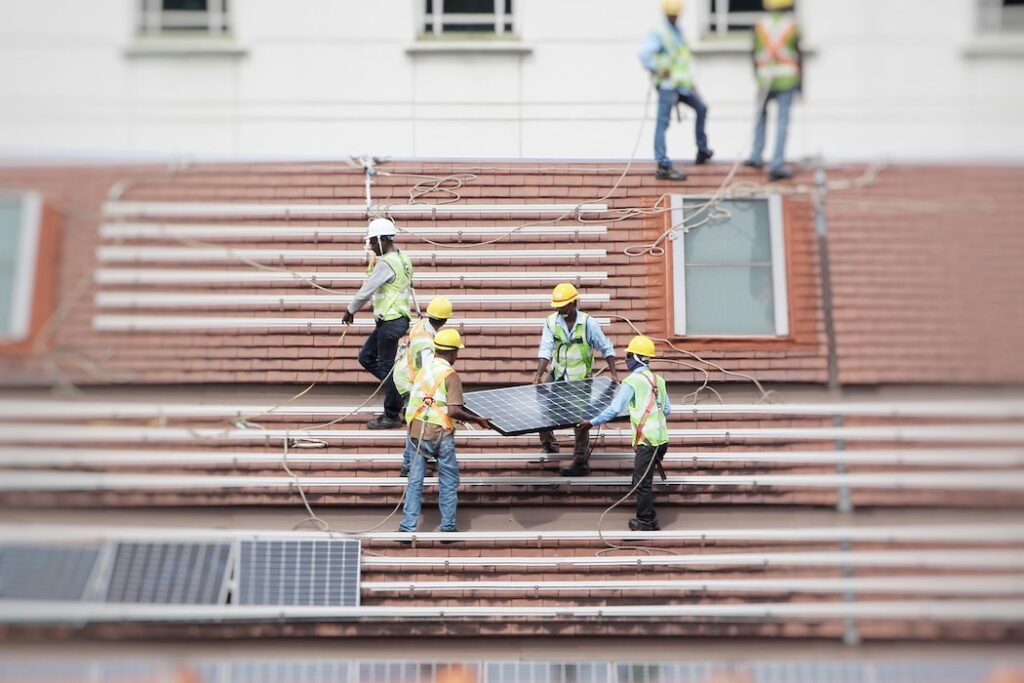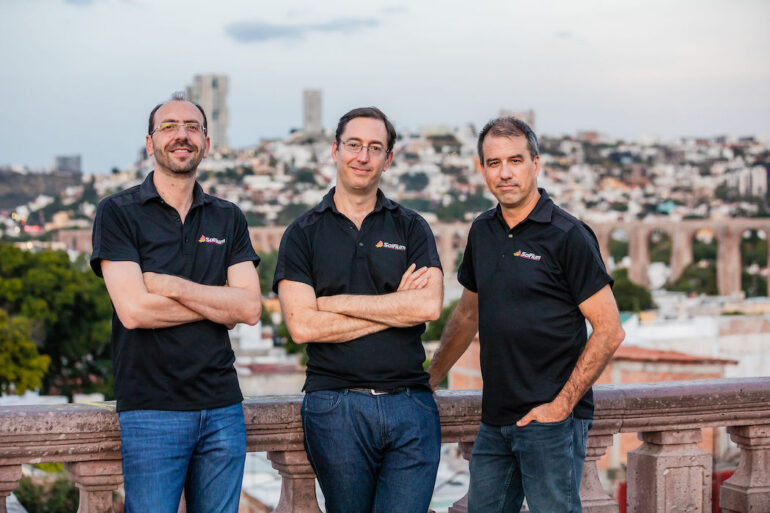Calgary and Montréal-based cleantech startup Solfium might be a Canadian company, but its ambitions lie thousands of kilometres south.
Latin America comprises one of the world’s most climate-vulnerable regions, and also has some of the lowest levels of solar power in the world. According to research from think tank Ember, solar accounts for only three to four percent of the total electricity production in Latin America and the Caribbean, compared to almost 50 percent in Europe.
“We are at a level of penetration that is so low, so the market opportunity is massive.”
This is just one of the reasons that the founders of Solfium, including co-founder and CEO Andres Friedman, see massive potential in this region.
“We are at a level of penetration that is so low, so the market opportunity is massive,” Friedman told BetaKit.
Solfium, which has developed a supply chain ecosystem for solar panels aimed to reduce friction for consumers, installers, and component manufacturers, is now working with large corporations, like Scotiabank and Suzuki, to decarbonize their value chains.
Last year represented a big one for the cleantech company. After launching its corporate offering, Solfium closed its first financing round and more than doubled its revenue. Targeting profitability this year, Friedman spoke with BetaKit about his team’s blueprint for solarizing Latin America.
An Uber-meets-Amazon for the solar industry
Solfium was founded in 2020 by Friedman, a supply chain expert who previously worked at Bombardier; Calgary-based CFO Zacharie Magnan, a former finance leader in the oil and gas sector; and Juan Osuna, a solar industry veteran.
Friedman said “the three amigos” noticed an opportunity in Latin America to bring a “disruptive, tech-enabled business model” that would facilitate the adoption of solar technologies.
“Latin America has the lowest level of solar penetration, despite ideal conditions and ideal unit economics for the end customer, and so we saw a big opportunity there,” he added.
He described Solfium’s first iteration as a blend of “Uber plus Amazon” for the residential and commercial solar industry. The platform’s “Uber” side includes a managed marketplace for instant solar product quotes, financing options, and an algorithm to match customers with installers. The “Amazon” part addresses solar market fragmentation by partnering with manufacturers, holding inventory in consignment, and managing logistics.
“We bring together manufacturers, installers, financing partners, and the end customer, and all those interactions are coordinated through our tech stack,” Friedman explained.
In the first few months, the founding team began working on the beta version of Solfium’s apps, and launched the offering in Mexico in May 2021. However, by 2022, the startup gradually began to pivot as it saw a “mega trend” in the European market, where large telecom firms or banks began partnering with solar companies as part of their net-zero or sustainability pledges.
“We wanted to adapt that model to Latin America, where that [trend] hadn’t happened yet,” he added.
Shifting to supply chain decarbonization
In recent years, a number of large firms have made pledges to reach net-zero carbon emissions within specific timeframes, and Friedman noted many of these companies’ emissions come from their own value chain, such as in factories, or via distribution channels.
“You really need renewable energy in your entire value chain as part of your net-zero journey,” he said. “The challenge for big companies becomes: how do you deploy, measure and report a solar energy program that you want to promote within your value chain that is so broad and fragmented without hiring an army of people?”
Solfium developed the ability to tag individual solar projects to a corporate dashboard, allowing corporations to complete and track thousands of micro-solar projects, each individually executed through Solfium’s app.
As part of this pivot, many of Solfium’s customers want to integrate solar into their own facilities, and Solfium eventually expanded to include industrial scale-solar projects. Today’s iteration of Solfium is working with large companies in decarbonizing their value chains with solar, starting with their own operations, and then going up or down the value chain.

Since pivoting its business model, Solfium claims to have seen significant growth. According to the company, Solfium generated $5.7 million USD in topline revenue over 2023, more than double its revenue from 2022.
Currently, Solfium has 15 corporate customers, including the Mexican branches of Spanish bank Santader, Canada’s Scotiabank, Japan’s Suzuki, and beverage multinational Pepsi. The startup has also signed a partnership with the Mexican Stock Exchange, which will allow its platform to eventually provide carbon credits.
In terms of environmental impact, the company expects that its installed solar systems will eliminate 70 million tons of carbon dioxide over their expected 25-year lifespan.
The startup reached another milestone last year, securing $3 million USD in seed financing led by Redwood Ventures, RaliCap, Katapult VC, Savia Ventures, and Propulia Capital, among others.
Powering Latin America’s solar potential
This year is expected to be a big one for Solfium. The startup is already looking at expanding beyond solar and providing electric vehicle chargers and batteries, the latter to help customers deal with power blackouts, which are common in Latin American countries.
Friedman expects Solfium to more than double its revenue in 2024, with one-third of that prediction coming from confirmed sales already. Friedman said this year he also anticipates Solfium to reach profitability.
Currently, Solfium is focused on Mexico, but the company plans to expand into more Latin American countries after a Series A round, which it plans to close this year. Friedman noted having Solfium’s “centre of gravity” in this region is very intentional.
In addition to solar’s low levels of penetration in Latin America, countries in this region may benefit from it more than countries like Canada, which deals with more cloudy weather and fewer hours of daylight.
This, coupled with the region’s minimal solar adoption, means Latin America will remain Solfium’s primary focus for the foreseeable future.
“We’re in the right market with the right product, there’s a massive opportunity,” Friedman added.
Feature image courtesy Solfium.

